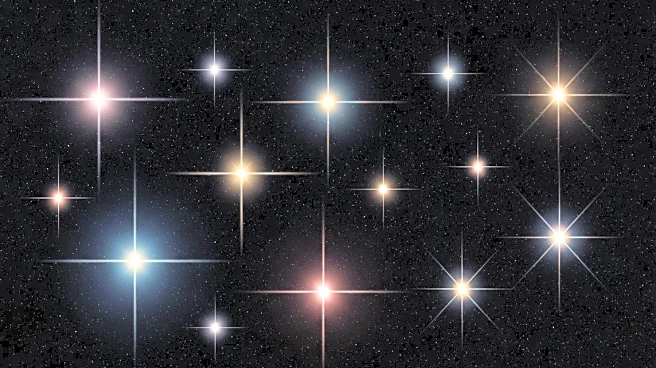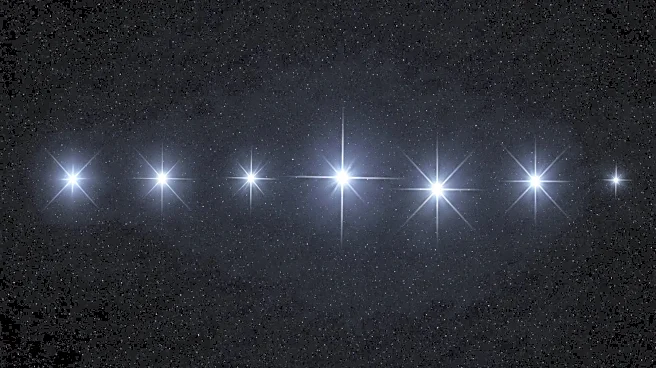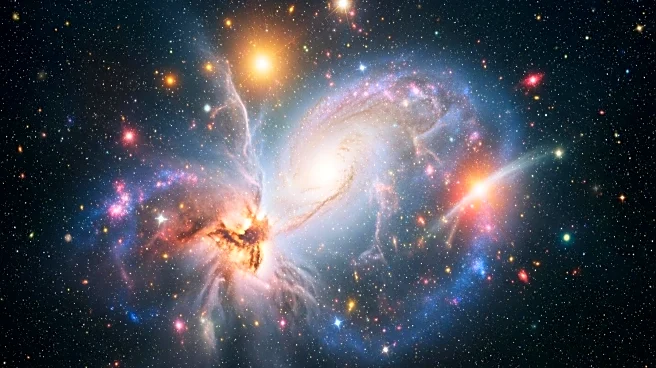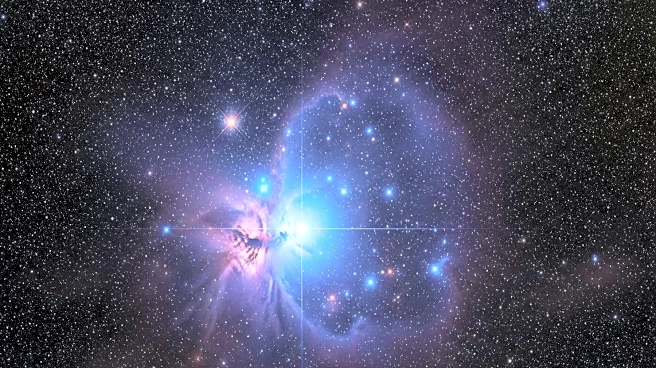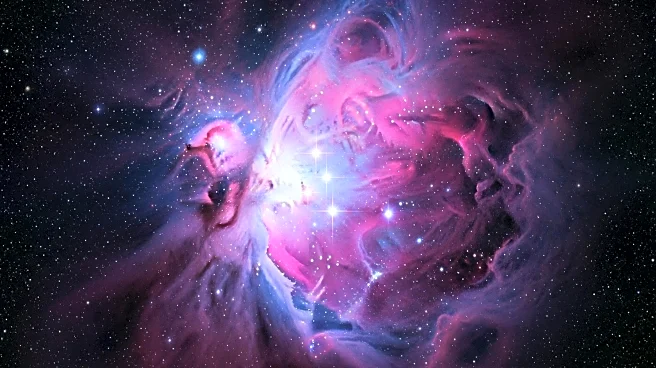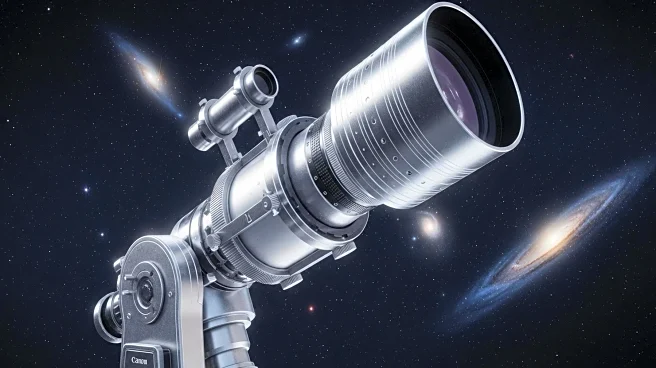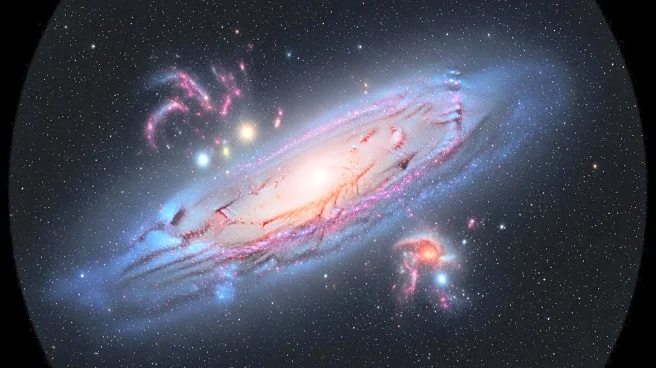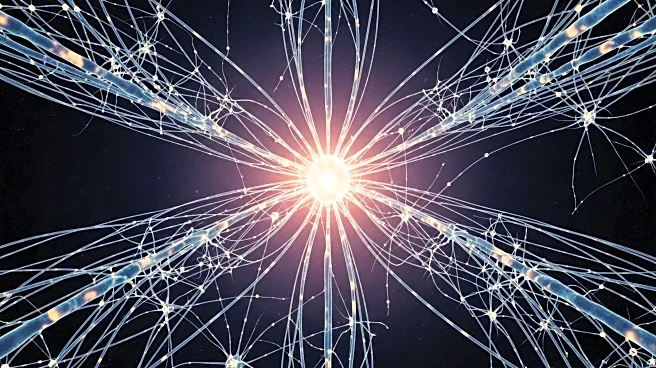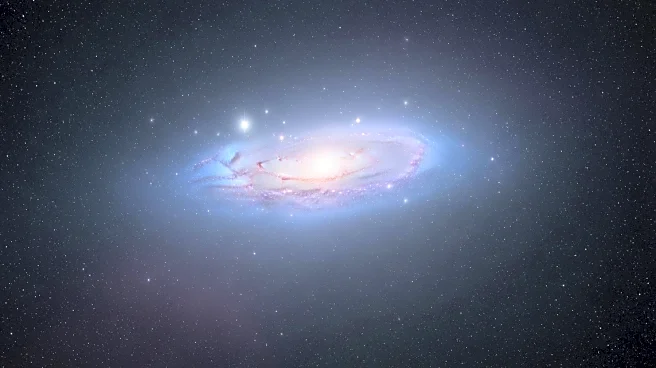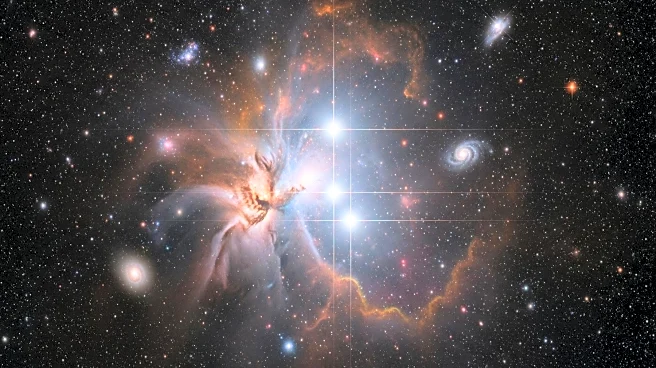What's Happening?
Recent studies have challenged the long-held belief that the first stars in the universe were uniformly massive. Traditionally, it was thought that these stars, composed of pure hydrogen and helium, were hundreds to thousands of times the mass of the sun and ended their short lives in supernovae. However, new research suggests that lower-mass stars may have also formed in the early universe. One study utilized astrophysical simulations to show that turbulence in gas clouds could lead to fragmentation, forming smaller stars. Another study demonstrated that molecular hydrogen, crucial for star formation, may have been more abundant earlier than previously thought, facilitating the formation of lower-mass stars. These findings imply that the second generation of stars, potentially hosting the first planets, may have formed earlier than previously believed.
Why It's Important?
The discovery that early stars may have varied in mass has significant implications for our understanding of stellar evolution and the formation of planets. If lower-mass stars existed in the early universe, they could still be observable today, providing insights into the conditions of the early cosmos. This challenges previous models that assumed only massive stars existed, which would have exploded long ago. The presence of lower-mass stars suggests a more complex chemical and physical environment in the early universe, potentially altering theories about the formation of elements and the development of planetary systems. This could impact future astronomical research and the search for ancient stars.
What's Next?
Astronomers are now tasked with finding these elusive low-mass stars from the early universe. Observational studies have reported possible detections, but none have been confirmed with high confidence. The search for these stars is challenging due to their low luminosity, making them extremely faint. However, advancements in telescope technology and observational techniques may eventually lead to their discovery. Confirming the existence of these stars would provide valuable data to refine models of star formation and the chemical evolution of the universe.
Beyond the Headlines
The implications of these findings extend beyond astronomy, touching on philosophical and scientific questions about the origins of the universe and the potential for life on other planets. Understanding the diversity of early stars could reshape theories about the conditions necessary for life and the likelihood of habitable planets forming around different types of stars. This research also highlights the importance of interdisciplinary approaches, combining astrophysics, chemistry, and computer simulations to unravel the complexities of the universe's beginnings.
